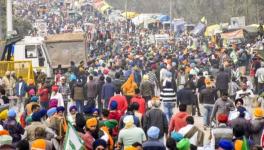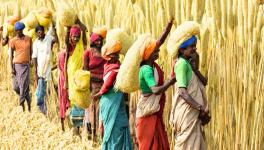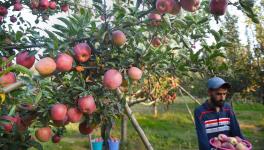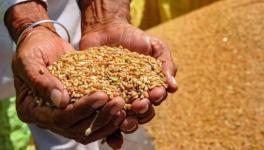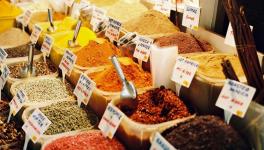PDS Queues Longer, Rice Market Price Higher as Kashmir Ditches Paddy for Apple, Urbanisation
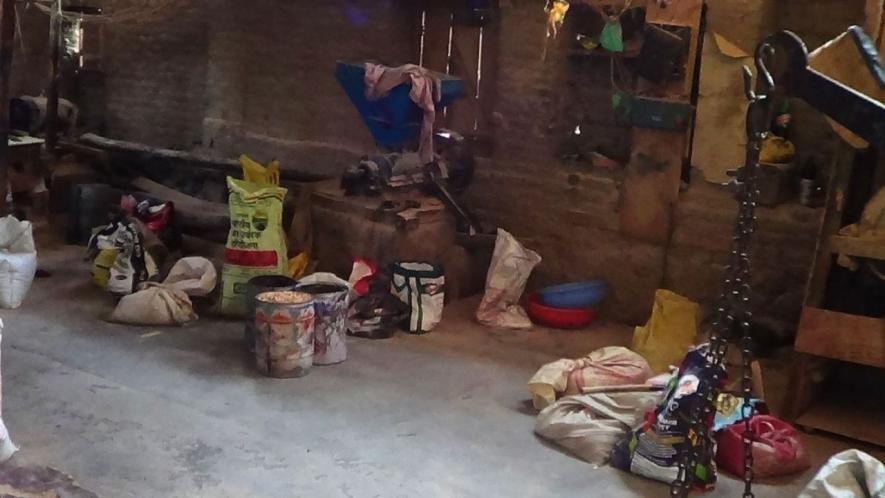
The once bustling Sarah's rice mill now vacant (Photo - Aatif Ammad, 101Reporters).
Anantnag, Jammu and Kashmir: On a chilly winter morning, Irshad Bhat waited outside the Public Distribution System (PDS) store at Shangus, located 75 km from Srinagar, in South Kashmir's Anantnag district to receive his family’s ration supplies. Living below the poverty line (BPL), his family of five is entitled to five kg of free rice per person.
That is not much, according to Irshad, who is in his early forties. "Even my son aged 10 consumes a lot more than five kg of rice a month, so more rice needs to be purchased from private vendors at premium rates.”
Irshad cultivated his rice fields earlier, but he turned them into apple orchards some years ago, falling for a trend that is on the rise in Kashmir. "I think I was mistaken, especially in light of the reduced number of subsidised meals.”
As Jammu and Kashmir’s rice production declined, people began to depend much on PDS rice. But then came the blow. On December 23, 2022, the National Food Security Act and Pradhan Mantri Garib Kalyan Anna Yojana were combined, which reduced ration entitlements. Until then, BPL families received 5 kg of rice per person each month at no cost, with the option to purchase an additional 5 kg for Rs 3 per kg. The extra rice option was removed after scheme integration.
Similarly, families living above poverty line (APL) used to get 5 kg per person at Rs 15 per kg with an option to buy anextra 10 kg per family at a subsidised rate. Antyodaya families previously received 35 kg per family free of cost, with an additional 25 kg available to them at Rs 3 per kg. The extra rice option stands removed for both categories now.
It seems farmers could not properly assess the situation before they stopped cultivating paddy because they had never faced rice shortage before. PDS store managers had sufficient stocks as farmers did not depend on them for rice. So, the storekeepers could easily provide the extra available rice to the families that needed more.
The monthly quota of subsidised rice for Jammu and Kashmir was 44,431 tonnes in 2011, but it became 42,900 tonnes by 2023. Though the drop is not huge, the rising population and conversion of paddy fields increased the dependence on PDS. With limited supplies, people had no option but to buy rice from private dealers at high rates, which drove up the prices further and reduced purchasing power.
The area under paddy cultivation has been constantly declining, with a government report estimating that Jammu and Kashmir lost 6,00,000 kanals (33,309 hectares) of paddy fields in the last decade. The area under rice cultivation has decreased from 3,04,500 hectares in 2015-16 to 2,68,800 hectares in 2022, raising concerns about increased dependence on rice from other states and potential shortages of the staple food in the Union Territory (UT) in future. The output of rice in UT fell from 8,18,100 tonnes in 2012–13 to 6,10,900 tonnes in 2013-14 and to 4,92,900 tonnes in 2021–22.
Multiple jolts
"Paddy land conversion is the result of decades of lawlessness, with successive governments neglecting the issue. There has been no intervention, allowing people to freely convert agricultural land into construction sites and apple orchards," stated Zareef Ahmad Zareef, a historian and author from Kashmir.
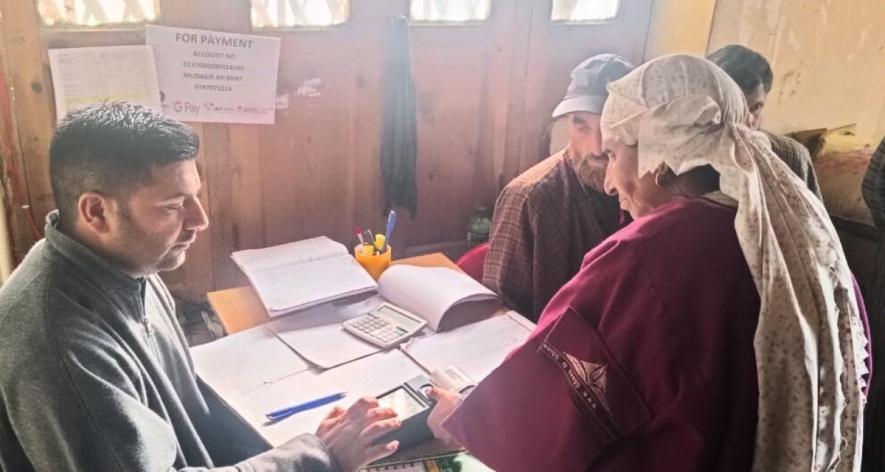
(Above) A woman from Shangus at the ration store (below) The once bustling Sarah's rice mill now vacant (Photo - Aatif Ammad, 101Reporters)
Though there is a law to prevent conversion into construction plots, there are no specific regulations for using agricultural land for horticultural purposes. Since horticulture gives more benefits, farmers convert agricultural lands for horticultural use. The area under fruits crops has increased by 6,978 hectares from 3,34,719 hectares in 2020-21, recording a growth of 2.08%.
Khiram-Sirhama in Anantnag district is an example for land conversion. Declared as the valley’s first apple model village in 2017, the area was known for rice production in the 90s. Now, agricultural fields are rapidly transforming from undulating rice fields to robust treelines.
“This whole belt of Khiram-Sirhama used to cultivate rice only. Very few people produced apples. The scenario has changed in the last 20 years,” Riyaz Ali Mir (54), a farmer from Sirhama, told 101Reporters. Currently, apple trees cover more than 458.2 hectares of Sirhama's 786.7 hectares of land. “Since growing apples has more monetary benefits and needs less labour, those who have not yet turned their paddy fields into orchards will do so in the coming years,” he said.
The study titled Land use land cover change in Kashmir Himalaya: Linking remote sensing with an indicator-based DPSIR approach focuses on the net difference in land use across 113 villages of South Kashmir from 1990 to 2017. The findings reveal a notable shift with over 5% reduction in farmland juxtaposed with a gain of 4.29% in horticulture.
Climate change is a main reason for paddy land conversions. Kashmir saw floods in 2014 and severe droughts. Agricultural crops, mainly paddy, worth Rs 2,100 crore formed a major chunk of the total crop loss worth Rs 3,674 crore across 6.94 lakh acres. Hence, farmers have been scouting for climate-resilient options. Recent droughts have forced them to turn to maize in many parts of South Kashmir as it requires less water.
Limited irrigation facilities are another reason for land conversion. "Due to climate change, farmers receive minimal or no water during crucial stages of paddy cultivation [May-June]. This compels them to leave the land fallow because delayed irrigation significantly reduces quantity and quality of rice produced," Professor Sheikh Tahir, an agronomist who teaches at Sher-e-Kashmir University of Agricultural Sciences and Technology (SKUAST)-Kashmir, told 101Reporters.
Only 237 custom hiring centres have been established in UT until 2020. "Paddy farmers are inadequately equipped with modern technology and mechanisation,” said Dr Saad Ahmed, an agronomist and faculty member at SKUAST-Kashmir. This prompts a transition towards apple that requires less mechanisation but offers higher profits.
Driven by increased migration, Kashmir has been experiencing urbanisation and increase in construction areas over the last two decades. Notably, the urban population has surged from 20% in 1980 to 30% in 2020, escalating land demand and rates and luring farmers into selling their paddy fields.
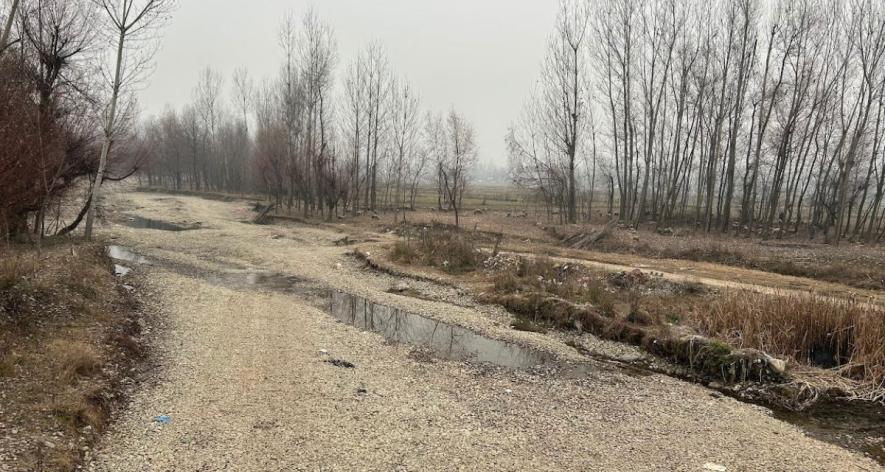
The parched watercourse in Shangus, a vital irrigation lifeline for agriculture (Photo - Aatif Ammad, 101Reporters)
Ripple effect
The last time Jammu and Kashmir was growing enough rice for its own requirements was in the early 20th century. By the 21st century, the rice cultivated in UT met only 55% of the requirement. "In recent years, there has been a significant surge in demand. Previously, I seldom sold all the allotted rice in my store, but now all of it is sold within seven to 10 days," claimed Ashiq Bhat, the stock manager of PDS store at Shangus.
“Having sold rice for 35 years, we typically witnessed medium to high demand during the wedding season, but now the demand remains consistently high year-round. At times, we even face supply shortages from dealers," said a prominent rice trader from Anantnag, wishing anonymity.
“We got sufficient rice stock from Punjab and other states earlier. However, the pursuit of greater monetary benefits in agriculture has led these states to shift to other crops. This transition may reduce rice supply," explained Dr Tahir.
A few years ago, rice prices used to start at Rs 22 to 24 per kg. However, traders now sell 30 kg of rice for a minimum of Rs 1,100 (Rs 36 per kg). "We barely make a 3% profit margin on selling price because we acquire rice from dealers at higher rates and need to adjust our selling prices," explained the trader.
Mubashir Rashid Khan (42) of Paison operates a private library and belongs to an APL family. "I have no option but to spend less on other groceries. Otherwise, how are we supposed to buy rice from traders? Shopkeepers are selling it for Rs 40 per kg."
Hailing from a BPL family, Abdul Bhat (55) operates a shop and resides at Shangus. "I need around Rs 3,000 per month for rice purchase against the earlier Rs 1,200. This extra spending could have covered my son's educational expenses otherwise," he says, adding that the government should increase PDS rice quantity.
A labourer who falls under the Antyodaya category, Tariq Ahmed* (45) resides at Chittergul. There are seven members in his family, so 35 kg is insufficient. "I earn only Rs 10,000 a month. I spend an extra Rs 1,500 on rice these days. Previously, a significant portion of my income was allocated for my children's education, but I had to cut back on those expenses. I am forced to reduce spending in all other areas."
For some others, savings have been impacted. "I used to save a good portion of my salary earlier, but the reduction of subsidised rice has affected it," said Mushtaq Bhat (55), a government employee in Anantnag town. "The additional rice expenses are met from the portion we usually save. We cannot compromise on other essentials," reasoned Farooq Shigan (47), a restaurant owner from Achabal.
“Increased dependency on other states for rice signifies a change in trade dynamics. While importing rice may meet immediate consumption needs, it can lead to a trade deficit,” warned Dr Mohd Iqbal Rather, a faculty member of the Central University of Kashmir specialising in agricultural economics.
With agricultural land diminishing, many are concerned about a potential loss of livelihood. "My earnings have significantly declined in recent years. Previously, I could earn around Rs 1 lakh per season [three months], but now it is barely 25,000 to 30,000," lamented Bashir Alie (50), a tractor owner for the last 30 years.
"Our mill used to brim with paddy, and people often had to wait for days, and at times months, to process their rice. Poor paddy availability has significantly impacted me," shared Sarah, (70), a mill owner from Shangus.
*Name changed to protect privacy
(Mohammad Aatif Ammad Kanth is a Jammu and Kashmir-based freelance journalist and a member of 101Reporters, a pan-India network of grassroots reporters.)
Get the latest reports & analysis with people's perspective on Protests, movements & deep analytical videos, discussions of the current affairs in your Telegram app. Subscribe to NewsClick's Telegram channel & get Real-Time updates on stories, as they get published on our website.









